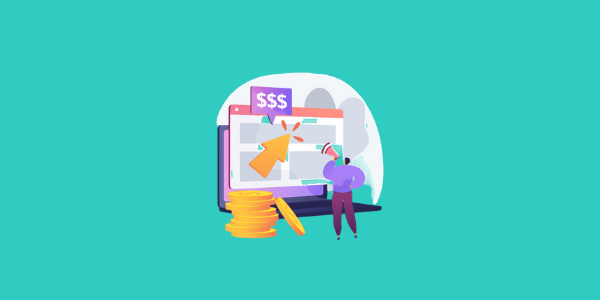Every new trial user or freemium account is one step closer to landing another paying customer. Or is it? Most software companies rely heavily on free accounts for customer acquisition, yet many still treat these programs like the last step of the funnel. After the visitor signs up, they stop marketing or selling. But this is when you need to pay the closest attention to your prospects’ behavior.
After signing up, most users will cancel, deactivate, or never log in and use the free account. In other words, they churn. And unless you send out a post-trial survey, there’s a good chance you’ll never know why that user didn’t complete a purchase.
Sure, sometimes you’ll run into an “it’s not you. It’s me” situation. But most of the time, it’s because you need to make some changes.
If you’re looking to convert more free trial and freemium users, focusing on marketing and user experience is the way to go. Let’s explore a few solutions for 4 of the most common reasons trial users churn.
- The Product Doesn’t Meet User Expectations
- The Activation Process Only Focuses on Conversions
- The Onboarding Experience is Inefficient or Broken
- The Pricing Doesn’t Match Perceived Value
1. The Product Doesn’t Meet User Expectations
In an effort to get new customers, you may be tempted to exaggerate your product’s capabilities. While this can help you get more users to sign up, it won’t help you win fans or paying customers. It’ll probably do more harm than good.
This also goes for companies with software that serves multiple use cases or has too many features. Without a clear picture of how you deliver on specific promises or what purpose a feature set serves, it’s easy for customers to get confused or miss out on some of the best parts of your product.
How to solve this:
Work on your messaging. When listing results your users can expect, be honest and think of problems and solutions vs. features and benefits. If one of your customers happens to get amazing outcomes, don’t just sit on it or share it internally. Use their story as a case study and show off their results! The important part here is to not over promise and tell everyone that they can expect the same results. Instead, show them what’s possible when users use your product.
Talk to specific people with niche use cases. When companies say they can solve nearly every problem, most people think it won’t solve any problem completely. Because it sounds like you lack the nuance! Remember, every industry and business model has different pain points, no matter how similar they are. Instead, call out a few different personas and get really granular about the environment they’re used to, the challenges they face, and how your solution uniquely solves for their needs in a personalized way.
2. The Activation Process Only Focuses on Conversions
Digital businesses love data and analytics. Clicks, traffic, conversions, form fills – if there’s a metric, we’re probably tracking it. And why wouldn’t we? By now, we’ve all been programmed with sayings like, “If you can’t measure it, you can’t manage it.”
But sometimes we need to jump out of the data and focus on user experience. When it comes to free accounts, it’s chess not checkers. Think about the long game. After that initial click and that signup, what happens next? This is when it’s time to focus on the buyer journey and providing ROI.
Without this, most of your users will never realize those proof points you list on your website. When you say you can “supercharge your ______”, your customers are going to expect those results. So how do you go beyond conversions and help customers get a win?
How to solve this:
Create habits and become indispensable. After a sign up, your most important task is making your product part of the user’s daily workflow. The easiest way to do this is by optimizing your marketing email nurtures and product tours toward a single action. Remove all the friction after sign up and add value within the first 30 minutes, if possible. Our CMO (Andy Jolls) calls this guiding users toward a magic moment, which can happen over email, a Pendo guide, product tour, GIF, etc. The idea is to make them remember your product and see the value, fast.
3. The Onboarding Experience is Inefficient or Broken
Your onboarding experience is where you build on those magic moments and help your users develop habits around your product. There are way too many brands that use the onboarding process as a checklist to get data from users, and while data is valuable, it’s not the point of onboarding.
Think about it this way: when you onboard to a new job, the whole point is for the company to set you up for success in your new role. Onboarding to a product should be no different.
Here’s an example of what a broken onboarding experience might look like:
- You sign up for an image editing tool that promises tons of editing options while being super easy to use.
- As you make your way to the user interface, you realize all the features they promised were actually only part of the paid version. You’re already frustrated.
- But you forge ahead and try to upload an image to edit… and can’t find how to upload the image, because the interface is too complicated.
- You close the tool, cancel your trial, and start researching competitors.
How to solve this:
Focus on habits, not timeframes. Because a lot of free trials and freemium accounts have time-based constraints, many people think onboarding is limited to the first few steps or first few days that someone starts using your software. But the truth is, onboarding should last as long as it takes a user to become comfortable and confident using your tool. If that takes 30 days and your trials only last 7 days, then focus on getting users comfortable faster.
If no matter how hard you try, you can’t do that, then it’s time to look at the product or length of your trial/freemium account. Here’s how to decide the length and format of a trial/freemium program:
- Factor in how complicated a product is and what features to start with
- Consider what plan users start with and what they need to do to unlock other tiers
- Decide which features require data or additional information to work
Add limitations to fast-track value. I know it sounds weird to provide less in order to increase value, but the truth is that your free plan only needs to have enough to give users a taste of the full service. Tease the premium features and position them in a way that explains what they’ll be able to do with the product. Another approach is to limit how many times they can use a feature or how long they can use it for.
Consider Zoom vs. Google Meet. Zoom shows you all the features up front, and lets you use them, but only for a limited amount of time. As a result, users who need longer meetings will upgrade their account. Google Meet on the other hand has a TON of powerful features, but they don’t even show them in the basic tiers, so most people have no idea that it can go toe to toe with Zoom on so many levels.
The easiest way to figure out what to limit is by talking to your customers and asking them what they wish they could do differently at work.
4. The Pricing Doesn’t Match Perceived Value
SaaS pricing is truly a science. It can be so difficult to determine what your product is worth, or better yet, what your customers are willing to pay for it. If you price it too low, people will think your product is low quality and not worth the investment no matter how small. If you price it too high, people will think you’re trying to rip them off.
How to solve this:
Test, test, test. Run tests to see what price points work for your product. If your product has lots of different features, you may want to consider offering tiered products, so people can pay more based on additional features and functionality. But before you do any testing, I’m going to risk contradicting myself and say you need to consider how you’re going to track baseline metrics like conversion rate, churn, average deal size, lifetime value, etc. but keep in mind that not every test will be successful. Keep testing every few months and eventually you’ll move in the right direction.
Use customer-focused frameworks. If you’re deciding pricing by talking amongst a few of your coworkers and creating some slides for your CEO, then you’re headed in the wrong direction. This guesswork will almost inevitably lead to you leaving a ton of money on the table. Instead, use a framework that leverages data from your target customers to “quantify” your buyer personas and understand who they are, what they want, and ultimately how much they’re willing to pay for what they want from your product.
There are three main pricing surveys industry professionals rely on for this:
- Van Westendorp Pricing Studies (our recommendation)
- Gabor Granger Pricing Analysis
- Conjoint Analysis
Need help increasing conversions?
If your trials aren’t producing the results you want, don’t worry. You have options. It’s all about understanding the customer—how they interact with your product, what they value, and their expectations. And if you need an extra pair of eyes or some help smoothing out the process, FastSpring is always here to help.
![[Customer Story] Why TestDome Considers FastSpring a Real Partner](https://fastspring.com/wp-content/themes/fastspring-bamboo/images/promotional/2023/FastSpring-TestDome-blog-thumbnail.jpg)




